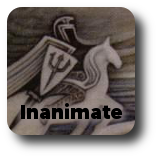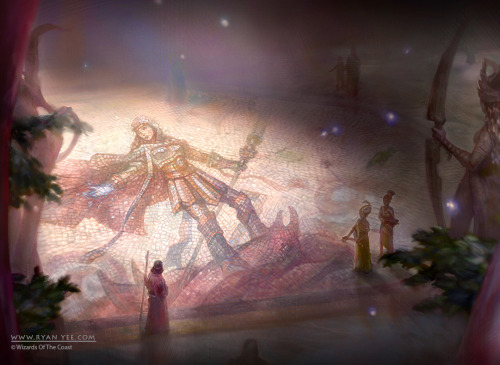 Hello again, everyone! Over the past few weeks we've done some serious work on the set skeleton for Tesla, such as in the Filling in the Skeleton challenge, as a part of the final push to get the project closer to serious playtesting. Today, I'd like to talk about how the process of filling the skeleton has gone, some discussion of approaches to collaboratively filling the set skeleton as a team, and more.
Hello again, everyone! Over the past few weeks we've done some serious work on the set skeleton for Tesla, such as in the Filling in the Skeleton challenge, as a part of the final push to get the project closer to serious playtesting. Today, I'd like to talk about how the process of filling the skeleton has gone, some discussion of approaches to collaboratively filling the set skeleton as a team, and more. |
| Hall of Triumph by Ryan Yee |
| Structural Collapse by Sam Burley |
Not only that, but designing the cards is difficult as well. When you're designing a card with a mechanic, you know certain effects pair well with the mechanic, or certain bodies, or certain evergreen keywords ... as noted in the Playtest Engineering articles and Make Common Cause, it's much easier to design something with all these conditions placed on it! But cards without mechanics have no such conditions. You know (roughly) their place in the curve, and (roughly) what card type they want to be, but not much else! Often, the lead designer will either place too many restrictions on the set skeleton (CMC, card type, stats, and so on), or not enough restrictions. Finding the middle ground of the two is so difficult that it's not really worth it at this stage.
So, we have multiple problems in a collaborative design once we've hit the set skeleton - not only are we facing issues with motivation and momentum, we're facing issues with our slots being either too restrictive, or too freeform. How do we address these issues?
| Mind Control by Ryan Pancoast |
This lets the designer produce a large batch of designs at once, and make some significant suggestions and proposals for the direction of the set. In addition, the experience one gains from this exercise can be valuable in determining what problems the set may be facing, or how the current suite of mechanics might not gel well together. The downsides to this approach are severe, however... not only does it take a huge amount of work, but it also produces a set that is extremely 'tinged' by having been designed by only one person. That person's biases will show up more strongly, their weaknesses will be uncurbed, and there will be a lack of 'freshness' and 'variety' among the designs. One designer cannot replicate the creativity and innovation of many designers working together.
| Council's Judgment by Kev Walker |
Of course, this second method is more difficult because, as you're sticking to collaboration, these restrictions, cycles, and 'bounties' have to be decided on by everyone. This requires a lot of discussion, which is difficult when matters are time-sensitive or when people aren't easily all brought together to talk.
| Enter the Infinite by Terese Nielsen |
Of these three choices I decided to choose the auteur approach simply because I thought it might reinvigorate the design a bit, and encourage people to begin debating over my designs, and start proposing alternatives they think might fit better. With some rejuvenation and a new light shined on the project, and some stuff for everyone to look at, perhaps we'd get more designs so I can pursue the last approach some more. In doing so, I made many decisions that I am eager to hear the response to - such as my decisions to include a cycle of Auras, a cycle of 'progress' mechanics from Magic's past, and my 'bounties' included many top-down designs, alongside some other choices, such as returning the Slith ability on a single card.
Overall, I think this approach went well, and was the best option available for a quick 'shot in the arm', if you see what I mean. But it definitely produced skewed results, designs that are very much from my mind.
Let me know how you guys like my proposed cards, which can be seen in the Tesla skeleton over at the Multiverse! Until next time, have a good week!
PS: Next time will be this week. :)


No comments:
Post a Comment